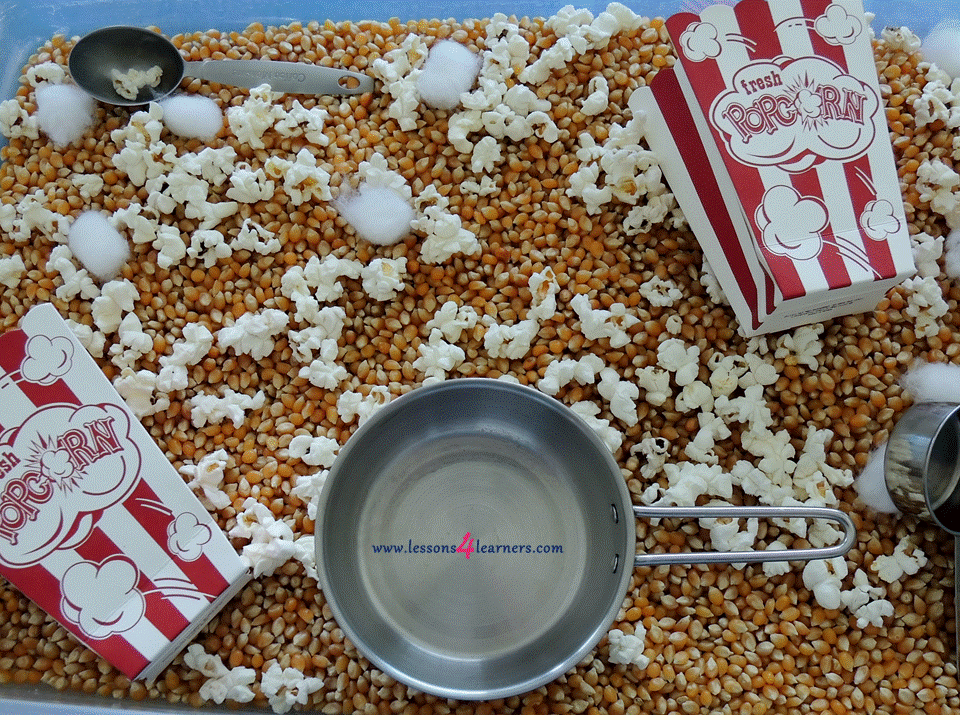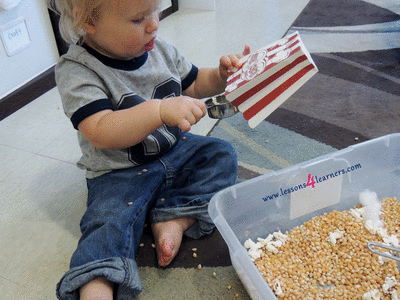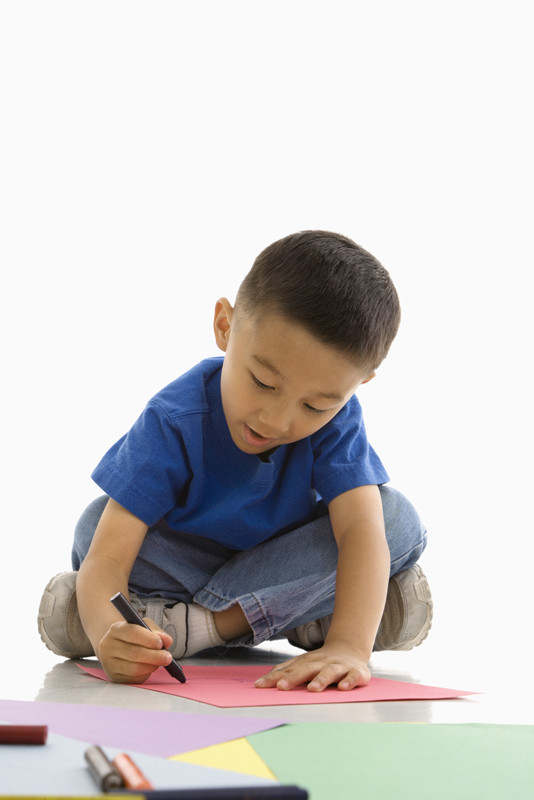Popcorn Sensory Bin
Lesson Plan:
|
Activity:
Popcorn Sensory Bin
Lesson plan developed by Ms. Erika Geelhoed, BA Ed
Age Group:
Objectives:
Children will:
|
|
II.4.2a
Materials:
|
Procedure:
- Prepare for the activity by creating the sensory bin.
- Add the popcorn kernels, already popped popcorn, popcorn buckets, cotton balls, empty water bottles, scooping utensils, and tweezers to the large plastic bin.
- Read The Popcorn Book with the children practicing appropriate reading skills (you can do a picture walk with them, practice prediction skills, and/or practice rhyming with words in the book).
- When finished, invite the children to explore the popcorn sensory bin.
- During play, you can ask them questions that relate back to the story.
Assessment:
- Observe and record the children's small motor skills. Were they able to use the tweezers to pick up the individual kernels? Did they use their fingers to pick up the popcorn and put it in the empty water bottle? Were they able to express connections to the facts presented in the story?
Click on the course icon for enrollment information.
Art is a Process that is to be Explored
|
Art helps kids develop creative problem solving skills and learn to communicate thoughts, feelings and ideas in a variety of ways. Artistic endeavors also help children learn to adapt to and respect others' ways of working and thinking, as well as gain the tools necessary to develop empathy. When exposed to art in an effective way, children can learn that like most things in life, art is a process that is to be explored. Art is not something that should be "done" for the purpose of producing an end result that should be measured or compared.
For very young children, making art—or just talking about it—provides opportunities to learn words for colors, shapes and actions. Before they can talk, art offers young children a way to express themselves and communicate ideas. They are also using their imagination and expressing what they see and experience in an abstract form. Drawing, sculpting with clay and threading beads on a string all develop visual-spatial skills, which are more important than ever. When kids are encouraged to express themselves and take risks in creating art, they develop a sense of innovation that will be important in their adult lives. |











